Recently, the TRI-Factor Singapore team, together with Chiropractic Studio teamed up to organise an informative, interactive workshop to help runners and triathletes to improve their biomechanics, form, and function, to enhance your training and ultimately their race performances – so that they will be able to perform at their peak potential.
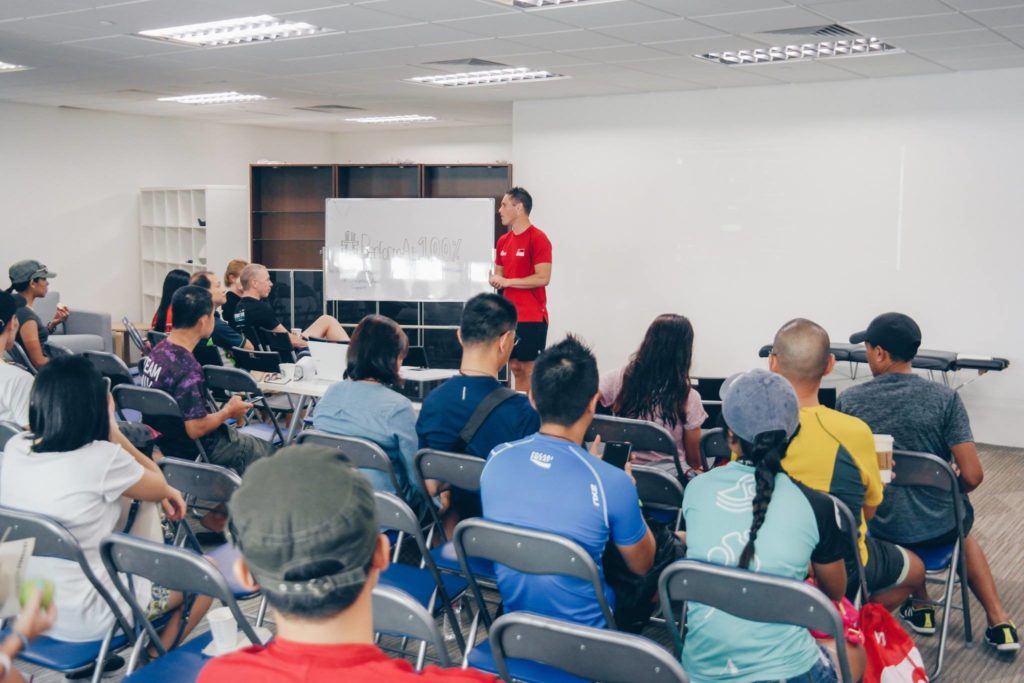
The talk, which had been held at the Chiropractic Studio premises located at Somerset, was conducted by Dr. Aaron McMaster, a Doctor of Chiropractic and also currently a member of the Singapore National Rugby Team.
This session is the first tie-up between Chiropractic Studio and TRI-Factor Singapore, for athletes.
Few ways to measure performance
According to McMaster, most athletes typically measure their performance in a few different ways and a few of these are as follows.
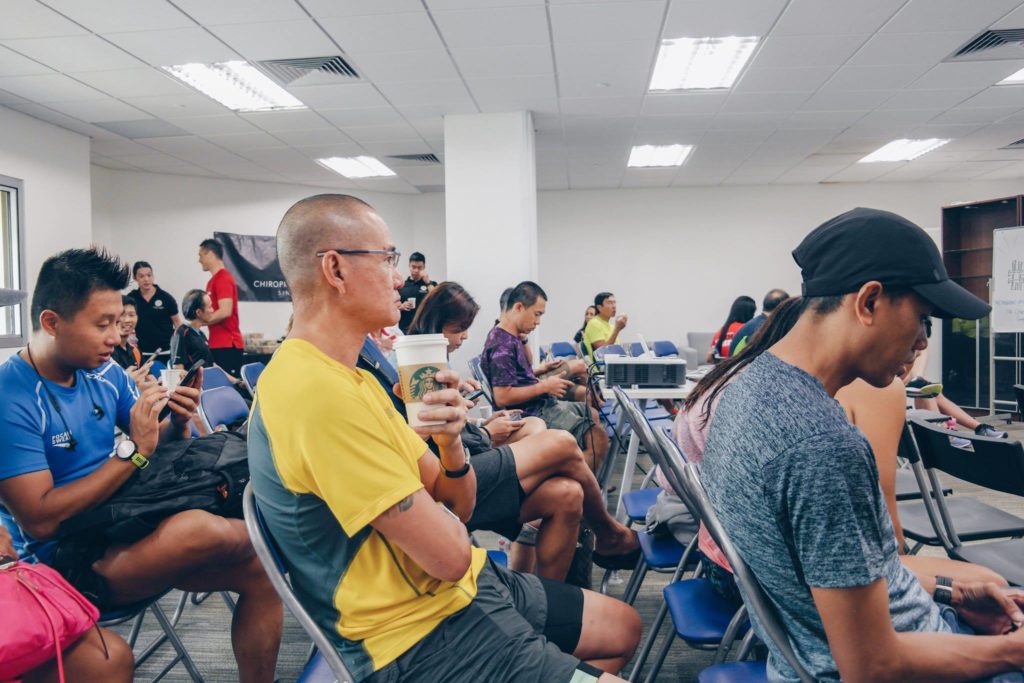
- Timing – How fast you complete your run or triathlon
- Distance – Trying to push yourself further, for example, progressing from 5km runs to marathons
- Heart Rate – A bodily measurement of how you are performing and the rate of perceived exertion
And to constantly improve their performance and better themselves, there are many different ways to do so depending on the school of thought that you may believe in.
For example, some of these include following a structured training plan, finding a running coach and utilising technology such as GPS watches or smartphone apps that can help you keep track of your training.
Connection between brain and body
But some of the above ways to better your performance are old-school methods though, and are not the only ways to improve yourself at running, McMaster pointed out, and he then proceeded to explain that research has shown that the connection between the brain and muscular performance during sports is stronger than we once thought.
The neurological connection, according to McMaster, refers to how the brain affects the body. The muscles are functional and they are directly related to the brain ability to tell them what to do.
Added McMaster, “Muscles are only as powerful as signals sent to it from the brain. For example I give you a command to wriggle your big toe, your brain received that command and sends signals all the way down the body to the big toe, which has small muscles that will then contract and wriggle.”
He added, “And how do you know that you have wriggled your big toe? You felt it. The muscles in the big toe will send information back to the brain to tell it that it has performed that movement. We take this for granted because it is automatic.”
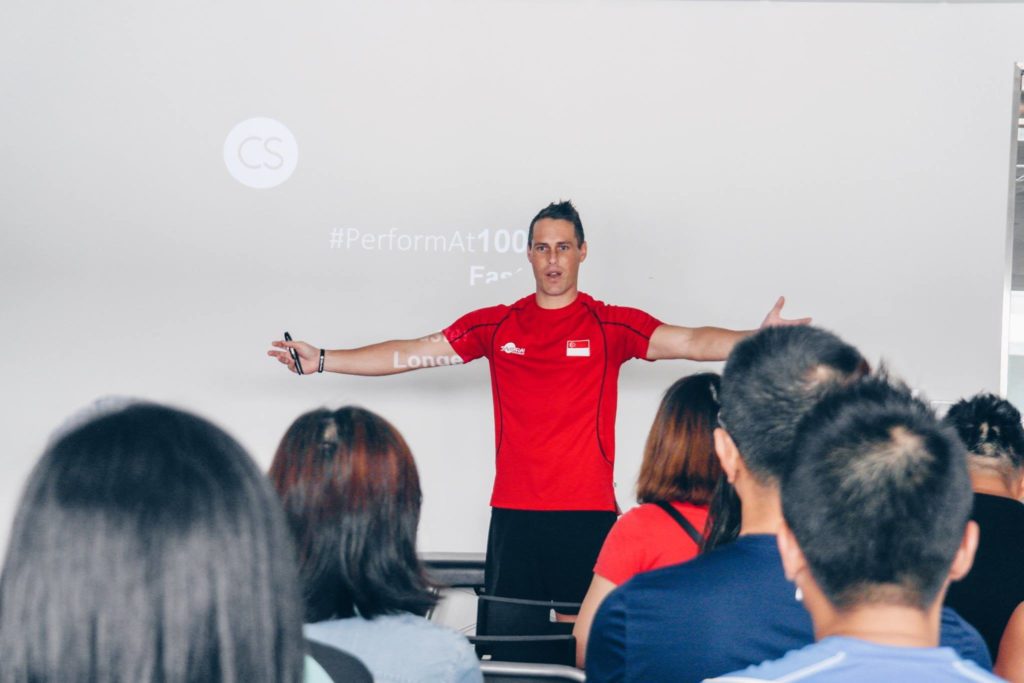
This is the same when we are swimming, biking and running; the muscles in our body will receive information from the brain and send messages down the spinal chord to the appropriate muscle to tell it what to do. The muscle will then do its job and send the message back to the brain, once again, through the spinal chord, to say that the task has been done.
Our bodies have been designed to work efficiently
Said McMaster, “This is how efficiently our body has been designed to function. If there is an easier way to do a task, then we will do it, too.”
He proceeded to cite a 1996 study from the Journal of Sport and Exercise Psychology where a group of weightlifters were asked to visualise and pretend that they were lifting weights.
The findings were that the weightlifters were able to recruit the same muscular activity and brain pattern as if they were actually lifting the weights and was a benchmark of the importance of the connection between the mind, the body and the brain.
McMaster continued, “But if something is disrupting that connection, then there will be an issue.”
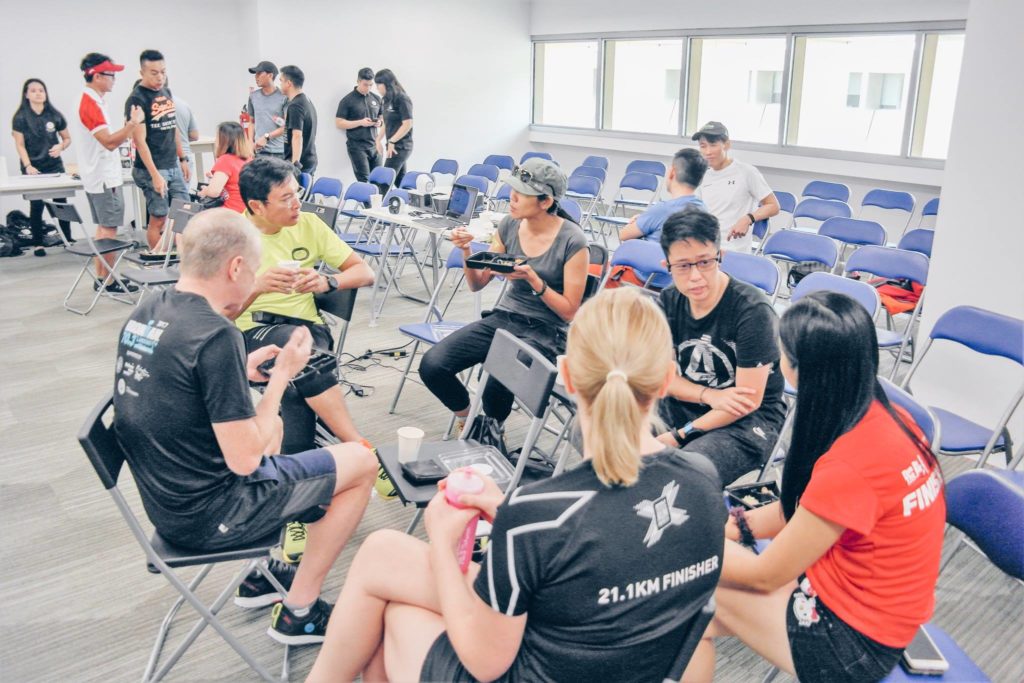
In fact, he had likened the nervous pathway to a safety pin. If the safety pin is connected nicely, there is a circular loop connecting the brain to the muscles. But if there is a disconnection, that is, when someone unfastens the safety pin, this is known as nerve interference.
Added McMaster, “And this can then lead to dysfunction or injury and the brain will have to figure out another way to get to that muscle, which will result in a decrease in performance.”
Besides a decrease in performance, another way to tell that you may have nerve interference within your body, is pain.
Tandem Gait Test
To assess how well the brain is connecting with the lower limbs, McMaster said that there is a way to do it, through the Tandem Gait Test.
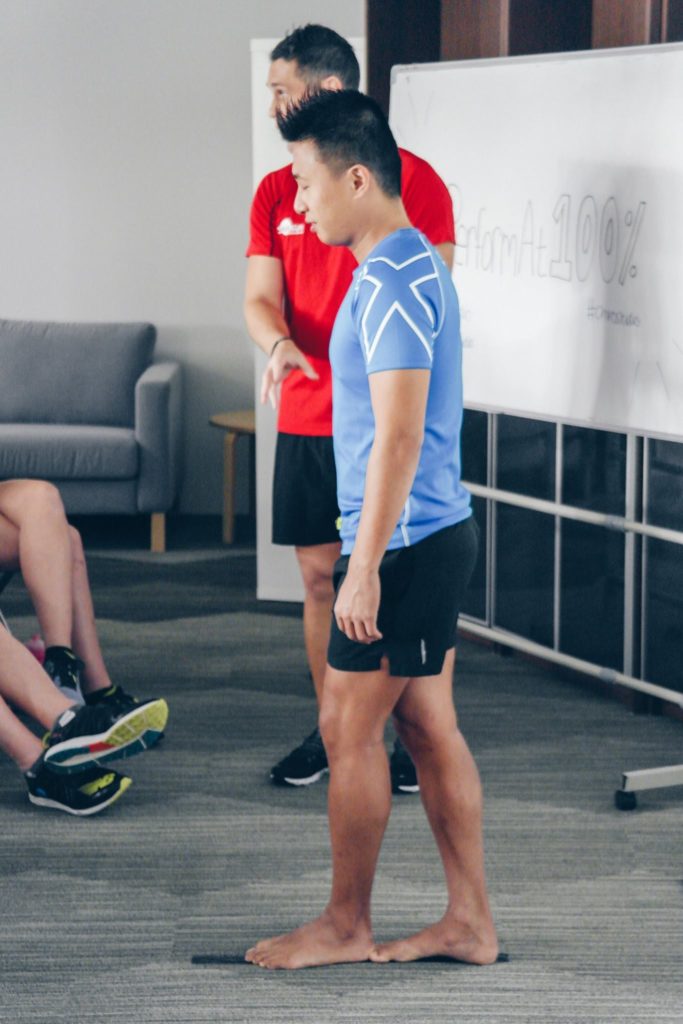
This test requires participants to walk in a straight line while touching the heel of one foot to the toe of the other with each step.
Said McMaster, “This test is good to know how well your neurological connection is performing. We do this in the studio to see if there is room for improvement as well. Doing it with your eyes closed, is a true reflection of how well the brain is connecting to the muscles. If you are not stable, this is a sign that there is a lag in the communication process.”
He then pulled a volunteer up from the audience to demonstrate the Tandem Gait Test, so that we could all get a better picture of what this was about.
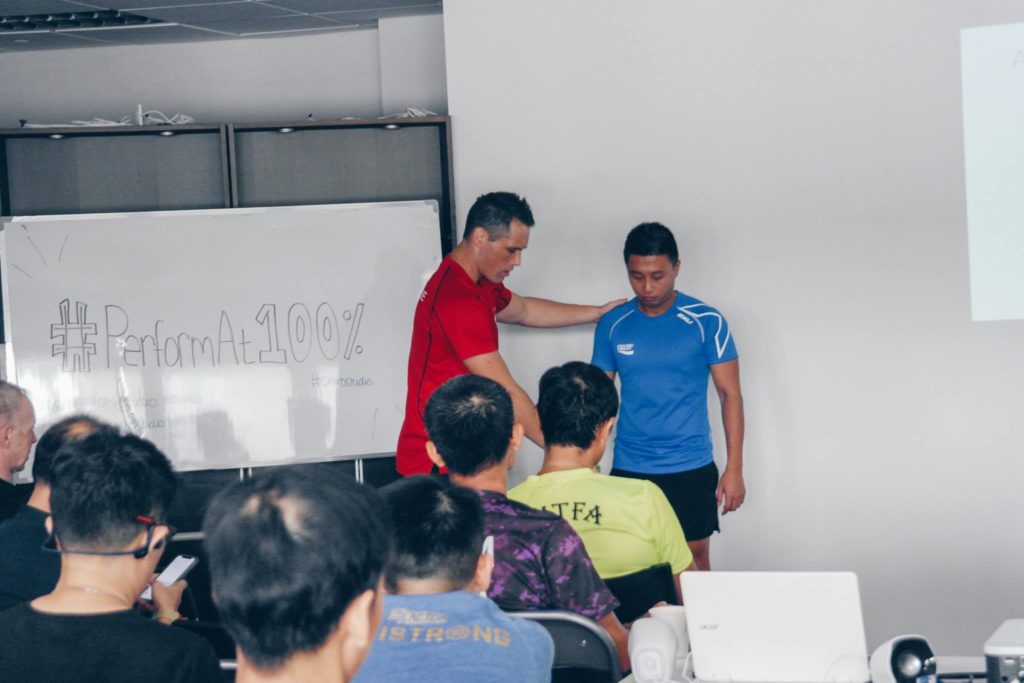
Mental Training for performance enhancement
But while McMaster pointed out that mental training can be as effective as physical training, mental training alone is not enough.
He said, “I am not suggesting to just stay at home and visualise yourself training, without going out and doing the work. But it can help to supplement the physical training that you do on a daily basis.”
With that, McMaster cited another study, where runners were tasked with pounding away on a treadmill at a constant speed while thinking of one of three things – their body movement, breathing or the external environment.
He added that the results of the study showed that the greatest oxygen consumption was by the runners who were focused on their body movement and the least was by runners who focused on the external environment.
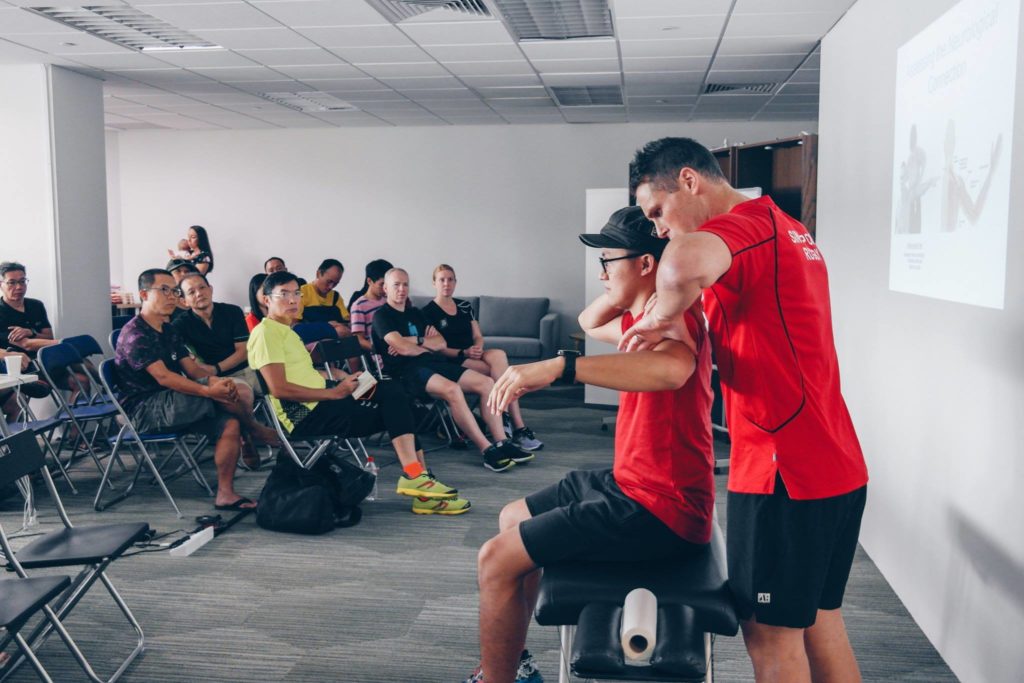
This suggests that if you are taking in more oxygen, your muscles may not be able to keep up with the demand so you will fatigue at a faster rate. And when fatigue sets in, your running stride changes, form breaks down and a more conscious effort is needed to run. But if you consume less oxygen, you will fatigue less.
So the conclusion of the experiment is to train the body using proprioceptive cues, by focusing our thoughts on the external environment and not internal cues, which takes conscious effort.
Three Running Related Cues
And with that, McMaster then introduced three running related cues to the athletes who were present at the event. These were coasting, sneaking up and running against a wall.
Coasting
Coasting is based on the principle that the best runner runs relaxed. When your body is relaxed, you tend to run easier, too.

Said McMaster, “By keeping your mind relaxed, it will create semantic response in the brain to help you run more efficiently. Top level runners are very good at this. The more unconsciously you can perform an activity, the more efficient you are; this goes against research that you can change the volume and intensity of your training or your running stride but it takes constant practice to do so.”
Sneaking Up
Sneaking up is about ground contact – the more contact that we have with the ground when running, the more energy that we will waste when we run.
Said McMaster, “We need to have the ability to sneak up behind someone – visualise and understand that the less contact time there is with the road and the lighter we stride, the faster we will be. The key to this cue is not about modifying your stride or internally focusing about to make the body run light. Rather, it is about purely thinking about hearing how light the foot hits the ground. Remember, we want to be externally focused.”
He continued, “So when you run, ask yourself, can I hear my foot? Every time you hear your foot hearing the ground, it must sound lighter the the previous step. The lighter the noise, the faster your will be running in terms of the contact time on the ground and the lighter your stride will be, too.”

Running Against A Wall
And finally, running against a wall means that you should visualise that you have an imaginary wall just in front of you when you are running, and this will in turn, help to prevent over-striding.
Said McMaster, “You are not thinking consciously about changing your stride; what you are thinking about is that there is a wall in front of you and you do not want to hit it. The mind will adapt and send signals for the muscles to respond when you have this thought in your mind.”
He added, “This is especially the case when you are fatigued and goes against the traditional thinking that you need to modify your stride – doing the latter will create less economic output. But by imagining the wall, you are shifting your centre of gravity and letting gravity do the work, making contact with the ground and using less energy to get your body’s pivot point over the foot. This has a huge effect on your running efficiency and position of your body, bio-mechanically.”
Focusing on the external environment
And with these running cues, McMaster concluded that by focusing on the things that you can hear, smell, and listen, this will help the body to respond appropriately. The brain will act and the muscles will then follow accordingly.
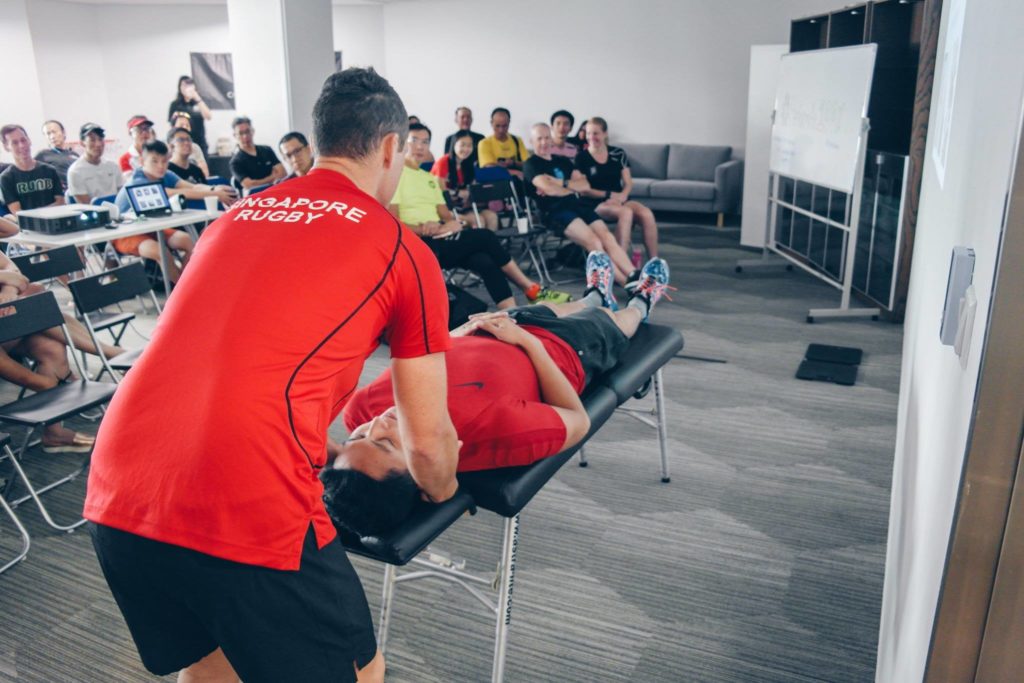
Chiropractic adjustment
As well, McMaster also added that chiropractic adjustments can help too, in terms of enhancing the neurological connections between the brain and the body.
He said, “If done right, this has a huge amount of benefit and is more than simply about moving a bone from Point A to Point B in the body.”
Continued McMaster, “When there is the appropriate amount of input, this can cause changes in the brain – that is a fact. If the spine is adjusted, it becomes more mobile and can allow the brain to process information faster. 90 per cent of your brain function is stimulated through spinal movement; if the spine is not moving, the brain is not receiving the information.”
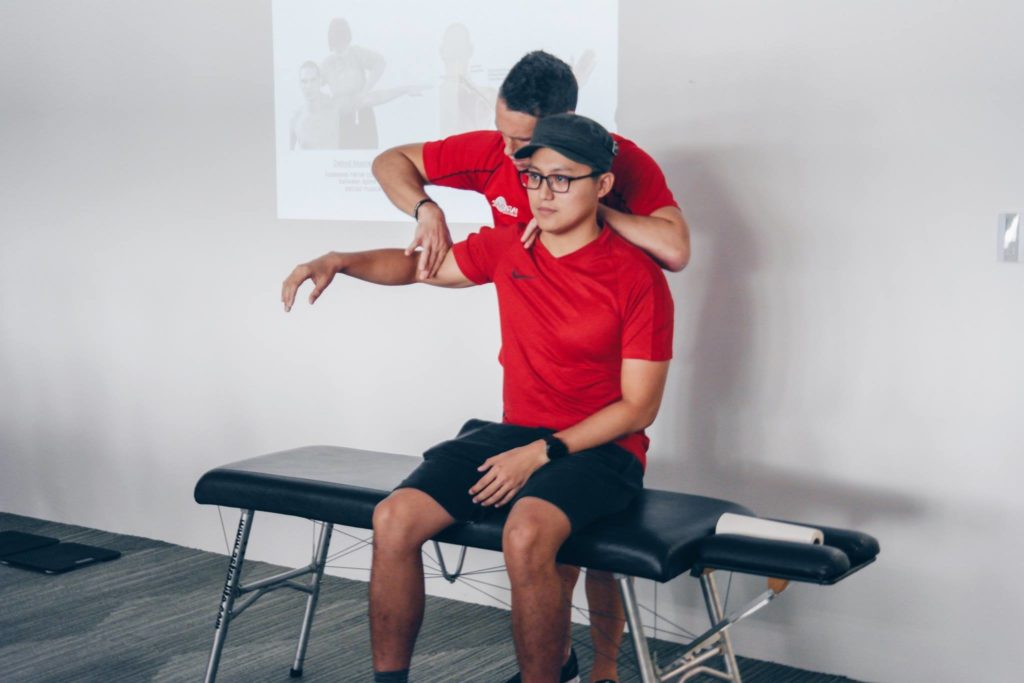
McMaster also cited a couple of studies that prove that chiropractic adjustment helps with sports performance. For example, a 2009 study in the Journal of Chiropractic Medicine revealed that golfers who received chiropractic care increased the length of their golf drive by eight metres.
And in stroke survivors, there is typically a big disconnect between the body and brain – but in a 2015 study in the Journal of Chiropractic Education, there was a 65 per cent increase in the lower limb muscle strength following just one chiropractic adjustment.
Said McMaster, “And that shows how much potential the body can reach even if it is limited to some degree, in order to be at 100 per cent.”
Professional athletes such as Serena Williams, Tiger Woods and Usain Bolt, according to McMaster, are also known to get adjusted on a regular basis for performance enhancement purposes.
Change to improve
McMaster concluded, “If you have been doing what you’ve been doing all this while, you will always get the same results. It is comfortable but nothing will change.”

He added, “We all want to be better. To be better, something has to change. Something new has to be adopted in your training regime.”
Whether this ‘something new’ may be regular chiropractic adjustment sessions or building stronger mental resilience in running, and so on, that is up to you, though.
After The Talk
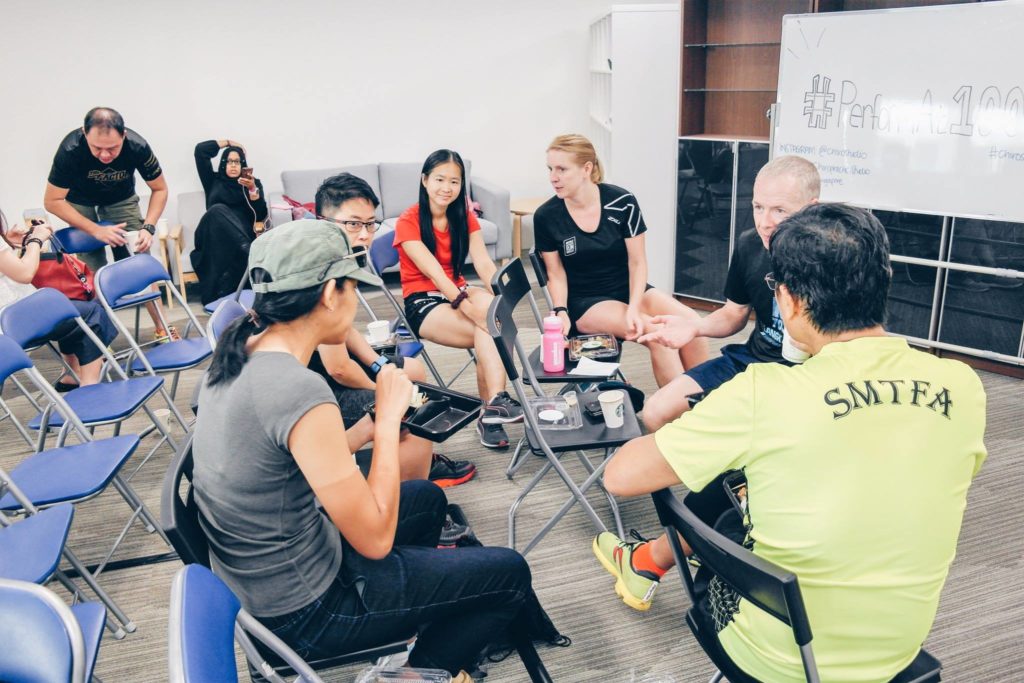
Following the talk, athletes had the opportunity to mingle and get to know one another over a healthy lunch, as well as to share what we had learnt.
As well, McMaster also made himself available for one-on-one questions too, if anyone had any.
All photos in this post are from Facebook/Chiropractic Studio Singapore.

Leave a Comment